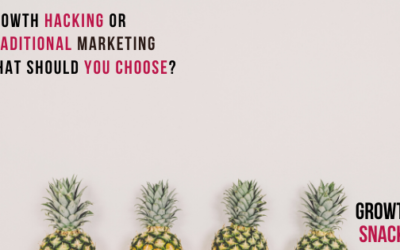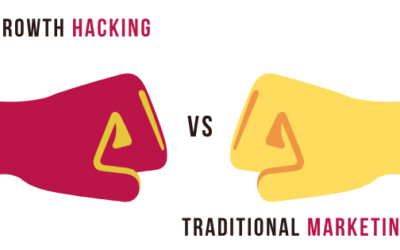“Chatbots only solve reactive sales and customer success tasks…”
The majority of sales and marketing leadership thinks of chatbots as a technology for reactive tasks:
- Greeting people when they land on your website, landing page or app
- Providing immediate responses to simple questions
- Allowing inbound leads to correctly qualify themselves
The clear added value of implementing chatbots to your website or digital support is that they scale the ability to be helpful to the people who are already dropping by.
When it comes to a form of A.I. in today’s business environments, the machine doesn’t have to fool people. It just needs to help them and thereby help the business that deploy these technologies.
At GrowForce, we look at A.I. tools as the only way to scale ‘helpfulness’ to a very large community of (your) customers, especially for those companies with a small sales and marketing team.
For the latter situation, it can produce immediate results, as you basically will catch leads that had been slipping through the sales net.
Unlike sales reps or customer success representatives, which can only engage with a handful of website visitors simultaneously, chatbots can engage with hundreds, thousands, or potentially even millions of visitors simultaneously, which means the experience is easily scalable.
The majority of sales and marketing leadership thinks of chatbots as a technology for reactive tasks:
- Greeting people when they land on your website, landing page or app
- Providing immediate responses to simple questions
- Allowing inbound leads to correctly qualify themselves
The clear added value of implementing chatbots to your website or digital support is that they scale the ability to be helpful to the people who are already dropping by.
When it comes to a form of A.I. in today’s business environments, the machine doesn’t have to fool people. It just needs to help them and thereby help the business that deploy these technologies.
At GrowForce, we look at A.I. tools as the only way to scale ‘helpfulness’ to a very large community of (your) customers, especially for those companies with a small sales and marketing team.
For the latter situation, it can produce immediate results, as you basically will catch leads that had been slipping through the sales net.
Unlike sales reps or customer success representatives, which can only engage with a handful of website visitors simultaneously, chatbots can engage with hundreds, thousands, or potentially even millions of visitors simultaneously, which means the experience is easily scalable.
The majority of sales and marketing leadership thinks of chatbots as a technology for reactive tasks:
- Greeting people when they land on your website, landing page or app
- Providing immediate responses to simple questions
- Allowing inbound leads to correctly qualify themselves
The clear added value of implementing chatbots to your website or digital support is that they scale the ability to be helpful to the people who are already dropping by.
When it comes to a form of A.I. in today’s business environments, the machine doesn’t have to fool people. It just needs to help them and thereby help the business that deploy these technologies.
At GrowForce, we look at A.I. tools as the only way to scale ‘helpfulness’ to a very large community of (your) customers, especially for those companies with a small sales and marketing team.
For the latter situation, it can produce immediate results, as you basically will catch leads that had been slipping through the sales net.
Unlike sales reps or customer success representatives, which can only engage with a handful of website visitors simultaneously, chatbots can engage with hundreds, thousands, or potentially even millions of visitors simultaneously, which means the experience is easily scalable.
Deploying chatbots proactively


If chatbots would be only serving as intelligent safety slopes for our website, we wouldn’t be writing this insight 😉
Sales and marketing teams can also configure them to setup new lead generation flows to support sales.
How? By creating custom hyperlinks that trigger chatbot conversations, and then sharing those links on social media, or in emails, or wherever you want to share them, you can proactively start adding new leads to your growth funnel.
Depending on how you configure your chatbots, step two could be to serve those hot prospects a few qualifying questions, and then the sales qualified leads (SQL’s) could be given the opportunity to schedule meetings on a sales professional’s calendar.
The entirety of this process, from the moment the hot prospect clicks your link to the time that he or she books a meeting with a sales professional, can take just a few seconds, and it requires zero intervention on the part of your sales and marketing team
In fact, there are really only two things salespeople are on the hook for here.
First, they need to connect their digital calendars so the chatbot can let sales qualified leads schedule meetings with them.
Second, they need to prepare and get to those meetings. Apart from that, a qualified growth marketer can set up the chatbot (without having to write any single line of code) and configure the entire interactive process.
Do you want to offer the same experience to entice your future customers?
How to Optimize Your LinkedIn Profile for Lead Generation in 6 Steps
Your LinkedIn profile is a meeting room. It is the suit you wear for the big meeting or elevator pitch to the potential investor. So you need to...
4 Marketing Articles That Will Grow Your Business – Growth Snacks Vol 7.
This week on Growth Snacks Growth hacking vs. traditional marketing - 8 major differences. Surprising a customer with a birthday cake. The Dracula...
Growth Hacking Vs. Traditional Marketing – 8 Major Differences.
Growth hacking vs traditional marketing, this article is going to explain the nature of two marketing approaches in an honest and transparent manner.



